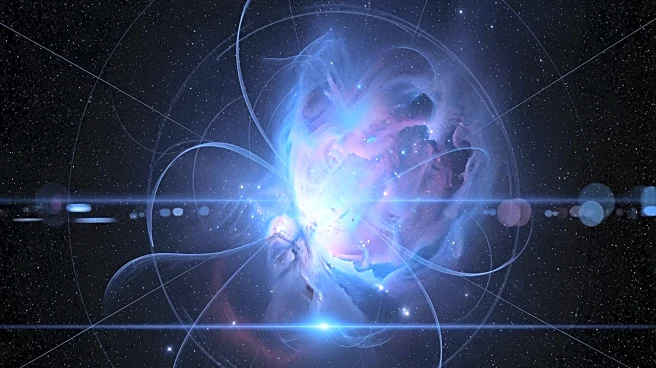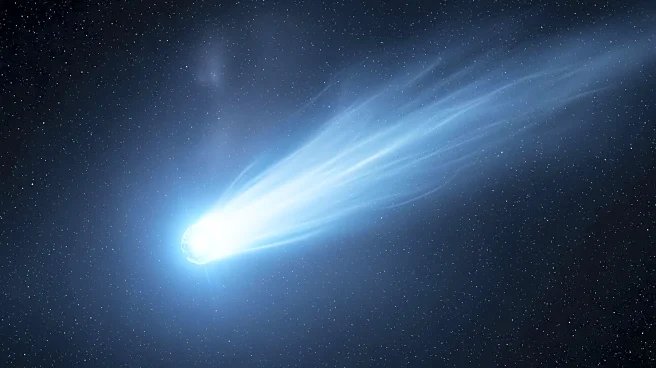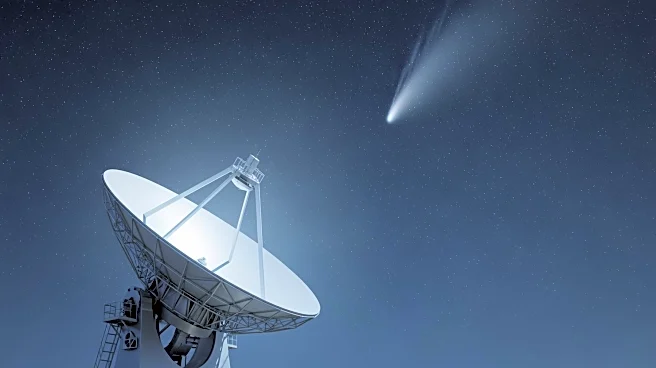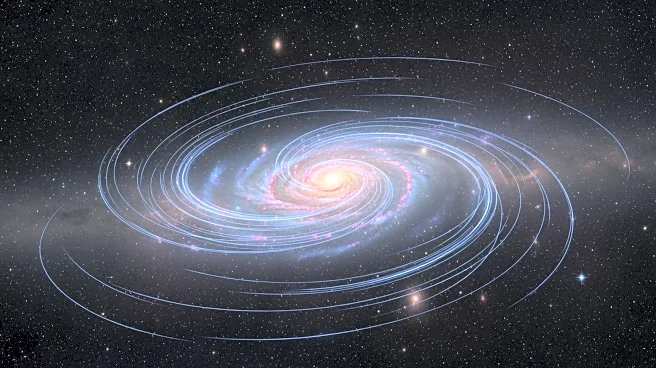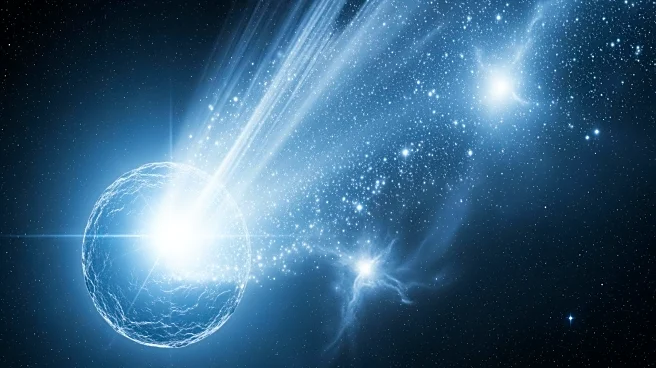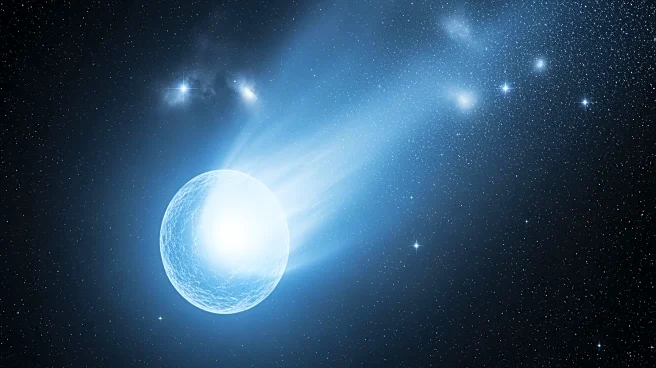What's Happening?
Astronomers have made significant progress in understanding the physics behind 'radio relics,' vast arcs of radio emissions found in galaxy clusters. These relics are formed by shock waves that accelerate
electrons to near-light speeds. Using high-resolution simulations, researchers at the Leibniz Institute for Astrophysics Potsdam have successfully reproduced the behaviors of these relics, which have puzzled scientists for years. The study reveals how shock waves interact with the turbulent outskirts of galaxy clusters, amplifying magnetic fields and accelerating electrons, thus explaining the observed radio emissions.
Why It's Important?
This breakthrough in understanding radio relics provides valuable insights into the dynamics of galaxy clusters and the large-scale structure of the universe. By resolving longstanding mysteries about these relics, the study enhances our knowledge of cosmic phenomena and the processes that shape the universe. The findings could have implications for future astronomical research, guiding the development of new models and observational techniques. This advancement underscores the importance of high-resolution simulations in unraveling complex astrophysical phenomena.
What's Next?
Building on this success, researchers aim to further explore the unresolved mysteries surrounding radio relics and other cosmic structures. Future studies may focus on refining models and simulations to gain a deeper understanding of the universe's evolution. The insights gained from this research could inform the design of next-generation telescopes and observational strategies, enabling astronomers to probe deeper into the cosmos. Continued collaboration among international research teams will be essential in advancing our understanding of the universe.
